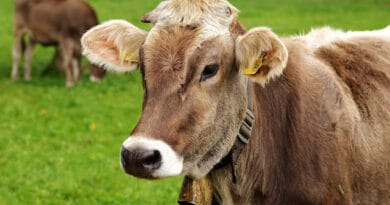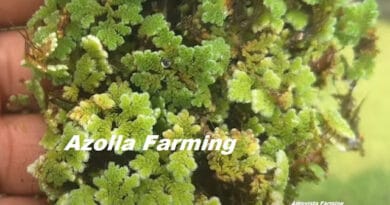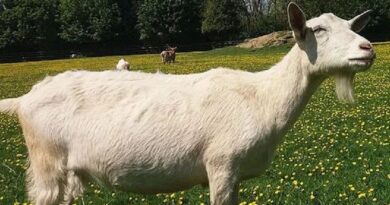Cultivation of Napier Grass for Cattle feeds
Napier, or elephant grass, is a perennial grass that provides nutrition and palatable green fodder around the year for haymaking. This grass is too coarse, but it can be used for silage making.
This is an interspecific hybrid of Bajra (Pennisetum typhoides) and Napier grass (Pennisetum purpureum). It is commonly referred to as elephant grass or Bajra-Napier hybrid. Perennial hybrid napier grass can be kept in the field for two to three years. The leaves of hybrid Napier are softer and bigger than those of Napier grass.
A combination of Napier grass with lucerne or berseem, or cowpea provides good-quality, palatable fodder for cattle. Napier grass is considered as a soil-restoring crop as grass leaves the soil richer in organic matter.
Napier, or elephant grass, is a native of Rhodesia in South Africa. The name “Napier grass’ is given in honor of Col. Napier. It is widely distributed in tropical and subtropical regions of Asia, Africa, southern Europe, and America. Napier grass is a tall perennial grass of 150 to 200 centimeters. It is similar to sugarcane in its habit of growth. It grows in clumps of 20 to 30 stalks.
Climatic and Soil Requirements for Napier Grass
- Napier grass can grow in tropical and subtropical regions. it grows best in the warm tropics.
- Grass stands drought for short spells and regenerates with rain. It is very susceptible to frost.
- Napier flourishes well on a variety of soils, especially those with good moisture retention capacity.
- It cannot survive in waterlogged soils. It can withstand saline conditions to some extent.
- With good drainage, fertile loam is best suited for its optimum growth.
Crop Rotations and Mixed Cropping in Napier Grass Cultivation
The following cropping patterns involving hybrid Napier may be used for production in different climatic conditions.
(1) Hybrid Napier is intercropped with cowpea during Kharif Berseem during Rabi.
(2) Hybrid Napier is intercropped with cowpea during Kharif and lucerne during Rabi.
- The above-mentioned two rotations of the hybrid Napier can be planted from February end to June-July.
- Earlier planting is better to get better and timely production, but it needs assured irrigation.
- NB-21 and Pusa Giant varieties are better for intercropping.
- Two budded stem cuttings or rooted slips should be planted at a spacing of 90 centimeters between rows and 60 centimetres between plants.
- Cowpeas should be planted between the rows to increase the yield and quality of forage, build up soil fertility, suppress weed growth, and also conserve soil moisture.
- With the start of winter, the growth of hybrid Napier is checked due to low temperatures; particularly in the northern part of India, berseem or lucerne may be planted to get forage during that period.
- Hybrid Napier supplies fodder for four to five years. The stumps of Hybrid Napier become old and tillering capacity diminishes considerably; hence, fresh planting is taken after four to five years.
Field Preparation
- The land should be prepared well and should be free of weeds
- A firm and well-levelled is required in hybrid Napier grass cultivation.
- Give the first ploughing with a mouldboard; the subsequent two ploughings with a cultivator or harrow. Planking follows every ploughing.
Varieties of Napier Grass;
Seed and Sowing;
- A well-prepared seedbed with adequate moisture is essential for its establishment at the end of February or March.
- The grass does not produce viable seeds; hence, it is propagated by vegetative means.
- When stem cuttings are used, each cutting having two or three nodes with potent bud is planted with a spacing of 90 x 60 centimetres.
- One bud is buried underground for the sprouting of roots, and the other one or two are kept at the above-ground level for the sprouting of shoots.
- When rootstocks are used, they are separated into root slips and planted to a depth of 25-30 centimeters in the soil at a spacing of 90 x 60 centimeters in February-March or in July at the onset of monsoon.
- About 27,800 root slips or stem cuttings are needed for planting one hectare of land.
Manures and Fertilizers
- Hybrid Napier is a quick-growing plant that responds to high fertility.
- Add 15-20 tons of farmyard manure or compost to the soil at least one month before planting.
- Apply phosphorus and potash according to soil tests in deficient soils at the time of sowing. It should be followed by a top dressing of nitrogenous fertilizers at 100 kg nitrogen per hectare.
- The topdressing should be done twice a year: once fifteen days after planting at the rate of 50 kg nitrogen per hectare, and the other towards the end of the winter season.
- If convenient, divide the whole amount of nitrogen into three or four equal doses and apply after each cutting for quick growth.
Water Management in Napier Grass Field;
- Immediately after planting, the plot should be irrigated heavily
- Subsequent irrigations should be given at week intervals for about two to three weeks, by which time the planting would get established.
- Later, the plot would need irrigation at intervals of a fortnight or so, depending upon rainfall and other seasonal conditions.
- During the rainy season, after heavy and continuous rains, excess water from the field should be removed as Napier grass is sensitive to waterlogging conditions.
Weed Control in Napier Grass Field;
In the initial stage, intercultural operations are necessary to keep down weeds while the grass is established. Two to three weddings are required to control the weeds; weeding may be done either with a hand hoe or a wheel hoe
Diseases and Insect Pests of Napier Grass
Napier grass does not face any major pests and diseases, but sometimes it is occasionally attacked by grasshoppers and stemborers. These are controlled by spraying Emamectin Benzoate 5% SG at the rate of 220 gm per hectare. Two sprays are enough to control. It should be done at least 30 days before cutting of fodder.
Harvesting of Napier grass
- If the planting is done in February-March, the crop will be ready for the first cut by the middle of May.
- Subsequent cuttings can be taken every 45 to 50 days, except during the winter months of November to January, when growth is rather slow, and the interval of cutting period would have to be extended.
- While cutting the grass, it is desirable to leave a stubble height of at least 10-15 centimeters from the ground level to avoid damage to the young growing buds near the base of the plant.
- The crop should not be allowed to mature as the cattle will not relish the fodder and at the same time, its nutritive value falls drastically.
Yield of Napier Grass
Napier grass yields about 300-400 tons/ha/year (6–7 cuttings) of green fodder annually, under good crop management. The yield of Napier grass mainly depends on the type of cultivar used and is influenced by both the environment and management practices employed.



